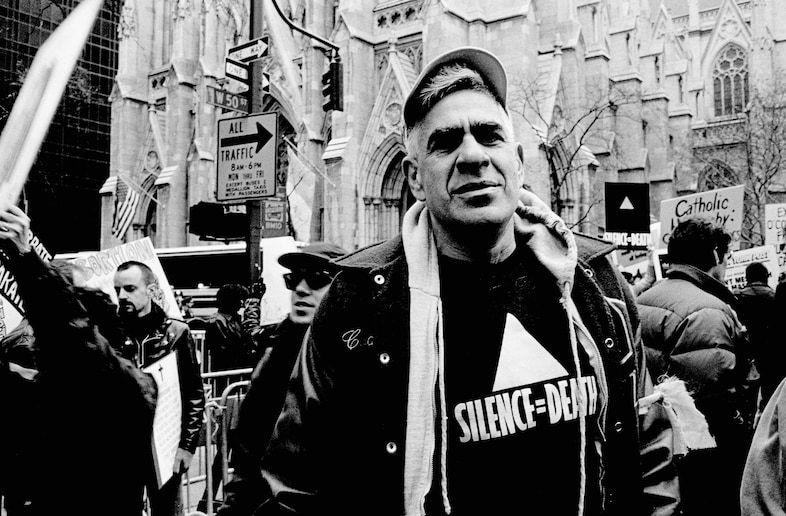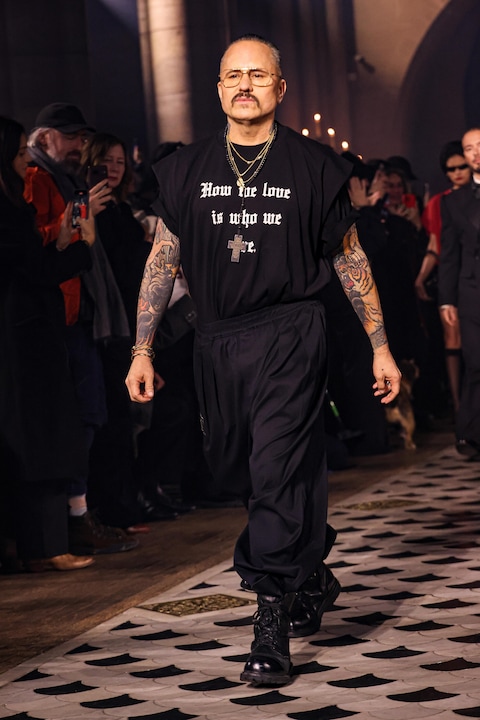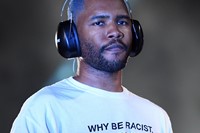Amid a global rollback of trans rights, Conner Ives’ “Protect The Dolls” T-shirt has exploded into the limelight. Here, we explore the T-shirt’s long tradition as a tool of dissent and demand
The night before his Autumn/Winter 2025 show, the American-born, London-based designer Conner Ives printed a simple T-shirt, using a heat press and transfer paper, that read in plain text: “PROTECT THE DOLLS.” For years he had resisted the designer slogan T-shirt, wary of its tendency toward hollow self-celebration, but the urgency to support his trans friends – the “dolls,” an affectionate term rooted in 1980s Afro-American ballroom culture – amid a global rollback of trans rights, from healthcare restrictions in the United States to anti-LGBTQ+ legislation across Europe, overrode his reluctance. “It just felt like this moment of synchronicity where I knew I had to say something,” he tells AnOther.
Now, the visibility of “Protect the Dolls” has travelled far beyond Ives’ end-of-show bow (the designer insists that this story is not about him – “it’s about the trans women in question,” he says). Worn by actors like Pedro Pascal and Tilda Swinton, and now perennially sold out, available only for pre-order, the T-shirt hinges on personal urgency and public momentum – something that is woven into the fabric of the T-shirt’s long tradition as a tool of dissent and demand.
From its industrial origins, the T-shirt is democratic by nature of its basic, genderless design; it is a cheap, accessible garment, and a natural surface to pin belief directly to the body. In 1983, Katharine Hamnett sharpened that instinct to a point, confronting Margaret Thatcher in a stark white tee reading “58% DON’T WANT PERSHING” in protest against the deployment of US missiles in Britain. Vivienne Westwood bent the form differently, using the T-shirt not to persuade but to provoke, to destabilise. From her Seditionaries-era “DESTROY” T-shirt to her 2003 design reading “I AM NOT A TERRORIST, please don’t arrest me,” the Queen of Punk always cleverly fit her politics into fashion, and vice versa. Both forged the T-shirt’s potential as protest on an economy of words: pithy slogans refusing ornament and demanding reality.

Dal Chodha, writer, editor, and educator at Central Saint Martins, reminds us: “As we have continuously been told, the body is political. Everything is political.” The T-shirt’s basic, immediate design makes it an ideal surface for political urgency: a message worn on the chest collapses the distance between belief and visibility, body and politics. Jenny Holzer’s early T-shirts, printed with unsettling, aphoristic truths, turned wearers into moving billboards for resistance; ACT UP’s “Silence = Death” T-shirts, worn amid the AIDS crisis, transformed mourning into public defiance on the chest of the very human vessel under threat. Both understood that the body, when inscribed with a message, became impossible to ignore.
Yet even the most urgent message printed across a T-shirt is not immune to the rhythms of fashion. Ives’ “Protect The Dolls” T-shirt is priced at £75, far lower than the typical prices of designer fashion, which has helped it move quickly, crossing fashion circles, celebrity culture, and political communities alike. Wearing a slogan across your chest may be an act of declaration, but it is also an act of participation that risks being swept into the same seasonal churn that propels fast fashion trends and cycles of attention. Who can forget the “This Is What A Feminist Looks Like” T-shirt, produced by Elle and Whistles, allegedly said to have been manufactured in Mauritian sweatshops – a sharp reminder of how easily political slogans can be emptied of meaning (The Fawcett Society categorically refuted this claim, explaining that the T-shirts had been made ethically).

Garments that feel vital now may end up feeling obsolete years later, particularly when they are swept up in celebrity-fuelled trends. It’s worth questioning how much of the “Protect The Dolls” T-shirt’s popularity owes to concern for the message, and how much to the simple fact that numerous celebrities have been spotted wearing it. Expression is not always authenticity; as Chodha points out, “many wear band T-shirts without ever knowing the music.” The protest T-shirt amplifies a cause, but the amplification can be fleeting. “What happens to the T-shirt when the mood is different?” he asks. “When a new thing needs our voices?”
But even if the “Protect The Dolls” T-shirt risks becoming a trend, its impact cannot be dismissed. Every purchase has supported Trans Lifeline, a trans-led organisation providing crisis support and community care. Ives, echoing Katharine Hamnett’s belief that “a successful T-shirt has to make you think but then, crucially, you have to act,” makes clear that “we need to direct these questions to [trans women].” A T-shirt can start a conversation, but it cannot finish it; as Susan Sontag warned, to stylise an idea is always to risk hollowing it out. The dolls, who live at the sharpest edges of social and political hostility, cannot be protected by visibility alone. Their protection demands more than buying a T-shirt: it demands listening, asking, and acting with sustained care.






